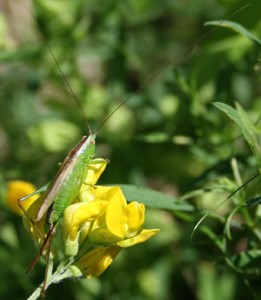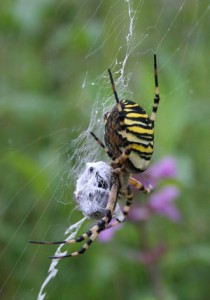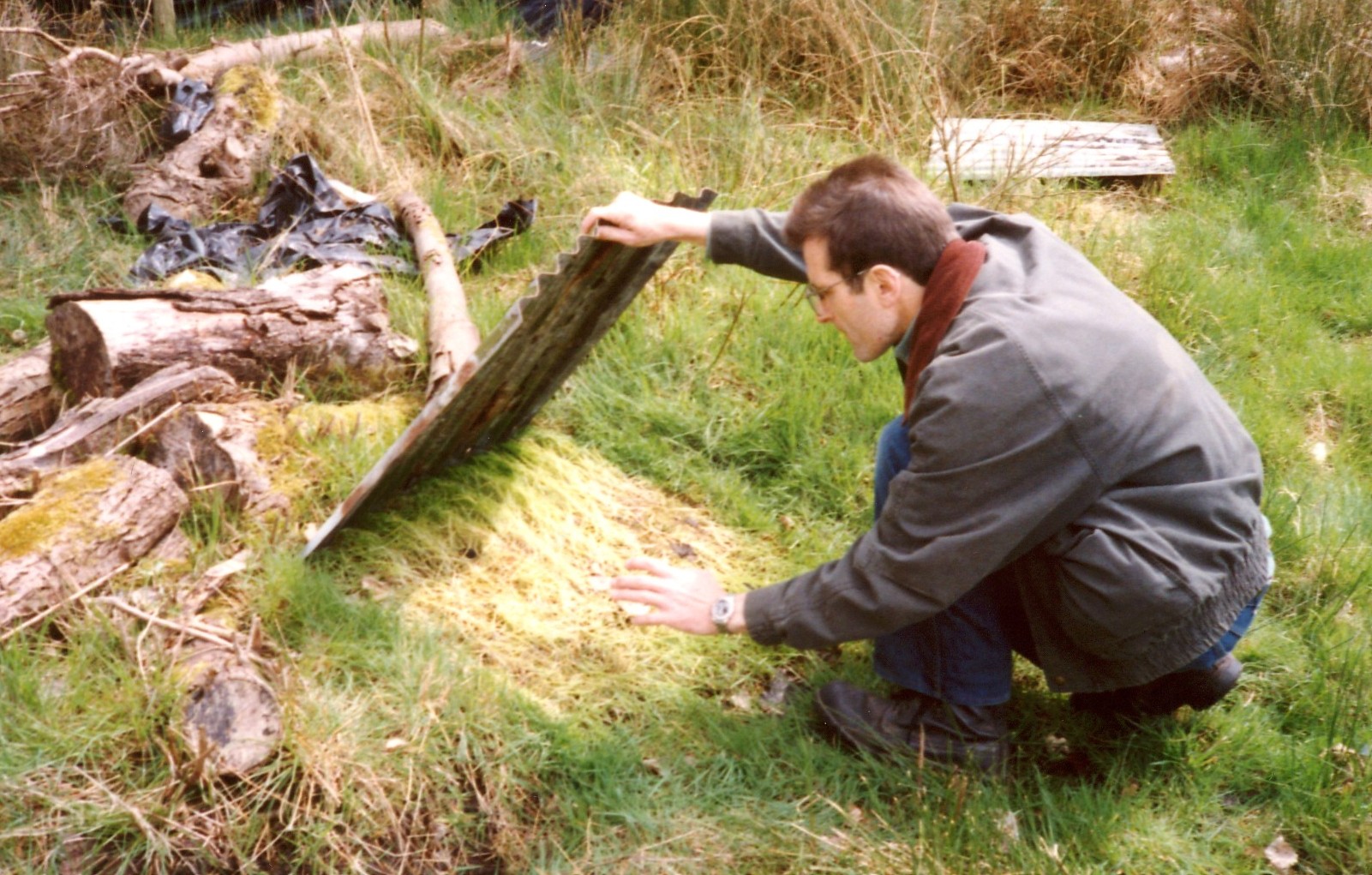London Wetland Centre home to deadly duel in the undergrowth
Conehead cricket being stalked across southern England by a spider with a cavalier attitude to lunch
On the surface all seems calm at this tranquil nature reserve but down in the grass a dramatic battle is raging between two fascinating animals, a bright green cricket and an extraordinary stripey spider.

Long-winged coneheads - attractive, bright green invertebrates - are very much present in the sedge beds around WWT London Wetland Centre at this time of year. The stridulating (high pitched and shrill) noise this bush-cricket makes is barely audible to the ear, but if you happen to have a bat detector handy (as you do!) you will be able to pick up the sound. The conehead, which is categorised as a Joint Nature Conservation Committee (JNCC) Nationally Scarce species, was first recorded in London during the mid 1990s and first colonised London Wetland Centre in 2000.
While their presence is welcomed by staff and visitors alike, fearsome looking wasp spiders are even more pleased to see them…
Wasp spiders are also Nationally Scarce and one of their favourite foods is the unfortunate long-winged conehead. Interestingly, wasp spiders and long-winged coneheads have been expanding their national range in tandem in the last couple of decades – moving north from the coastal southern counties of England: long-winged conehead reaching London in c. 1995 and the wasp spider in 2002.

Wasp spiders can be seen around London Wetland Centre, located in the wetland margins of the entrance lake, south route and Sheltered Lagoon. Keep an eye out for more of them as the month of August wears on – several individuals are now impressively big, at about 4 cm with their legs stretched out on their web – and in the next couple of weeks you may see their silken flasks, about the size of a golf ball, which enables the eggs to hatch out in comparative safety whilst ‘mum’ often stands on guard. The spider was first discovered at London Wetland Centre in 2003 only a year after it was first found in London.
And if you would like to try out a bat detector, book onto one of the bat walks at London Wetland Centre on Thursday 5 or 19 September, 2013. After a fascinating talk by one of our bat experts you’ll be out on the reserve in small groups looking – and listening – for these amazing winged mammals as they swoop through the air hunting moths and other insects. Find out more here: Big Bat Walks



